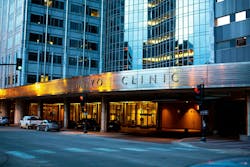Rochester, Minn., plans extensive geothermal network
By Peter Fabris, Contributing Editor
The city of Rochester, Minn., home of the famed Mayo Clinic, is going big on geothermal networks.
The city is constructing Thermal Energy Networks (TENs) that consist of ambient pipe loops connecting multiple buildings and delivering thermal heating and cooling energy via water-source heat pumps. A groundwater-based system with a heat exchanger installed into the aquifer feeds into a closed loop that connects to buildings’ HVAC systems.
Groundwater is pumped from and returned to the same source so that the aquifer maintains its water level. Each well can generate between 20 and 50 times the amount of energy compared to a traditional borehole, requiring far fewer wells to be drilled and making the system ideal for tight urban sites.
Rochester’s City Hall has been connected to the city’s first TEN and is now fully electrified. The networks will next be expanded to connect four other public buildings (the library, art center, civic center, and a theater) and up to six privately owned multifamily buildings.
